|
Female. © Peter J. Bryant. |
Sonoran Blue Philotes sonorensis Lepidoptera: Lycaenidae Back to Butterflies of Orange County, California |
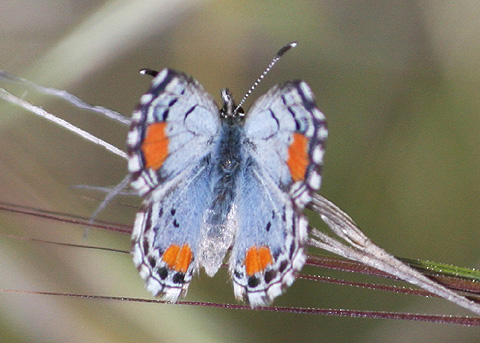 Female. San Juan Loop Trail, Ortega Oaks, Riverside County, CA. 4/4/12. © John C. Avise. |
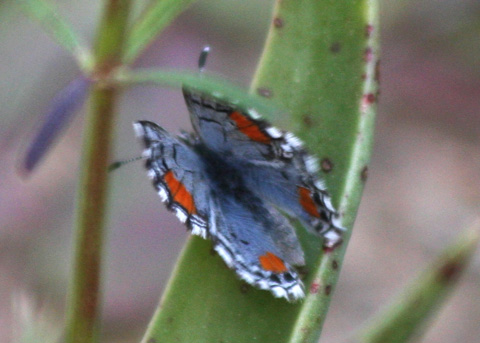 Female ovipositing on the larval foodplant Dudleya lanceolata. San Juan Loop Trail, Ortega Oaks, Riverside County, CA. 4/4/12. © John C. Avise. |
Male. © Peter J. Bryant. |
 Male. © Robert Gorman |
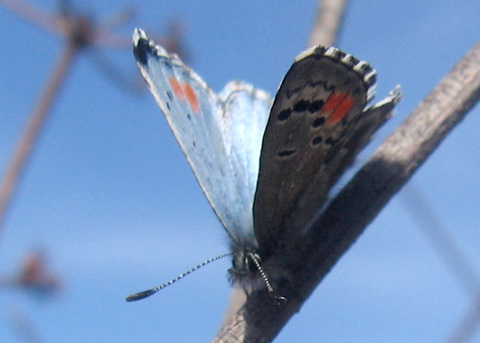 Male. San Juan Loop Trail, Ortega Oaks, Riverside County, CA. 4/4/12. © Robert Gorman |
 Upper Hot Springs Canyon, 3-15-15. © Ron Vanderhoff. |
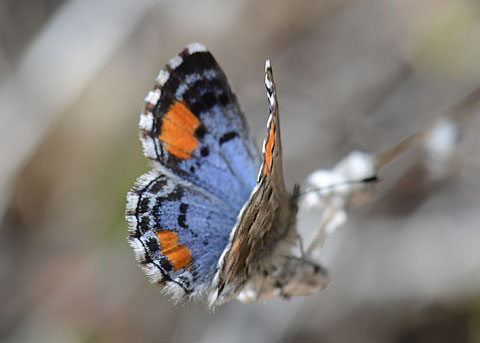 Female. Chiquito trail, San Juan Creek, Riverside County, CA. 3/15/13.© Peter J. Bryant. |
 Male. Chiquito trail, San Juan Creek, Riverside County, CA. 3/15/13.© Peter J. Bryant. |
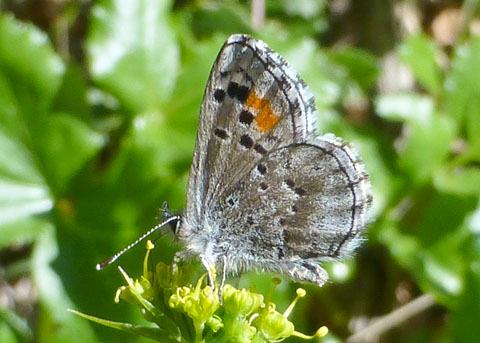 Male. Chiquito trail, San Juan Creek, Riverside County, CA. 3/15/13.© Peter J. Bryant. |
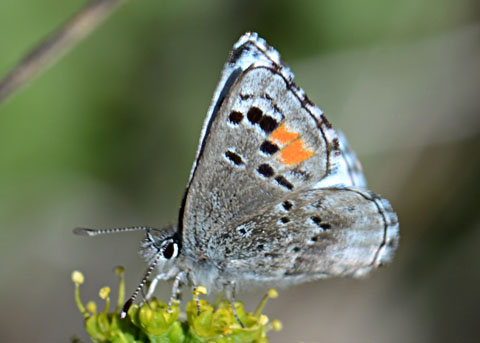 Male. Chiquito trail, San Juan Creek, Riverside County, CA. 3/15/13.© Peter J. Bryant. |
Characteristics: Silvery metallic-blue with red and black spots on the dorsal wing surface; ventral wing is gray-brown with black, red, and white markings. Forewing length: 10-14 mm. Similar Species: The distinctive Sonora Blue is not easily mistaken for any other species. At a distance, however, the iridescent-blue sheen may resemble that exhibited by Glaucopsyche lygdamus australis (Southern Blue). Habitats, Behavior: Usually spotted flying down hill slopes into canyons or flitting about the larval foodplant. Distribution: Recent records are generally from our large mountain canyons: Silverado, Harding, Black Star, upper Santiago and Trabuco. Recent coastal records are from Aliso Canyon and the Cameo Highlands area (Corona del Mar). I have also seen several of the butterflies at 5080 feet on the west slope of Santiago Peak. The Sonora Blue apparently was once rather common in the hills north of Irvine Park, although these colonies were not relocated on visits to the area in 1973. Other localities are Fremont Canyon, the Laguna Lakes, and Dana Point. The Laguna Lakes and Dana Point colonies are now probably extinct or endangered. Flight Period: One brood occurs, adults flying from February to May. Most local captures are from middle to late March. Larval Foodplant: Live forever (Dudleya lanceolata), a relatively common native succulent found growing on rocky, exposed slopes (Boughey, 1968). Other Remarks: The largest known colonies presently occurring in Orange County are those located in Silverado Canyon, particularly behind the fire station. However, the butterfly cannot be considered common anywhere in Orange County. Sonora Blue populations in the county have apparently declined in numbers in the last 50 year s, although additional documentation is needed. Curious people who dig up the foodplant for home succulent gardens do not help the butterfly's survival. From Orsak, L. J. (1977). The Butterflies of Orange County, California. Center for Pathobiology Miscellaneous Publication #3. University of California Press, New York. 349pp. Return to Butterflies and their larval foodplants |
|
